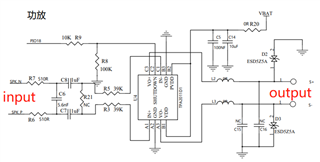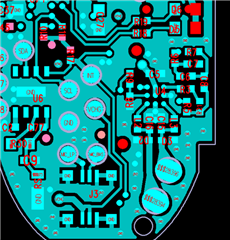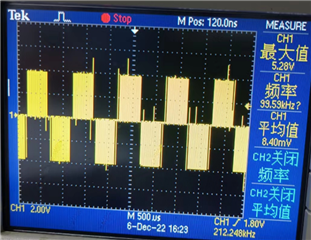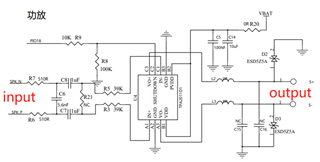A, Application Description

Input: Class D output signal connected to Qualcomm QCC3040 Bluetooth chip
Output: bone conduction sound unit connected with 8 Ω impedance.
The corresponding PCB layout is as follows:

B, Problem feedback
Shipped 10k+, customer complained 20+
All customer complaints are sound unit burning
C, Analysis and confirmation
- Confirm with the sound unit supplier that the condition for scalding is that DC voltage is applied to the positive and negative poles.
- We have conducted destructive tests. When 2.0V DC voltage is applied to both ends of the sound unit, it starts to burn, and the temperature can reach above 50 ℃.
- We tested the defective products returned by customers and found that there was about 2.7V DC voltage at both ends of the sound unit.
- We also found that the 2.7V DC voltage disappeared after the EN pin (C2) was grounded, which basically judged that the output DC voltage was from TPA2011D1.
D, The help and support we need
- How does TPA2011D1 output pin generate DC voltage?
- If it is a design problem, how do I modify it?
- Production is continuing, and we need to solve it as soon as possible to reduce losses.
Best regards.




